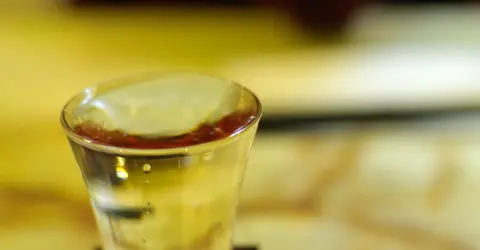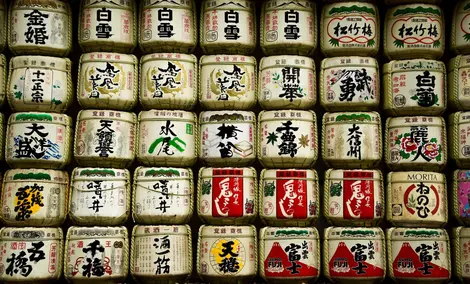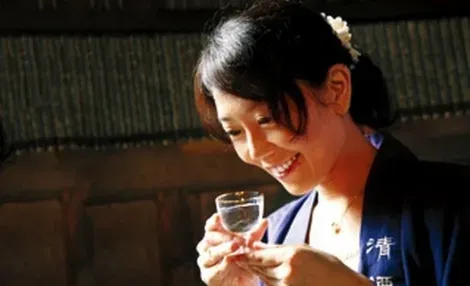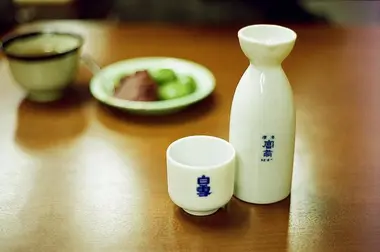Sake お酒
- Published on : 06/11/2017
- by : O.D.
- Youtube
The famous Japanese alcohol
Sake is not only one of the most consumed drinks in Japan, but also one of the oldest. From religious rites to gastronomy, sake is a key element of Japanese culture.
A sacred drink
The term "sake" is a blanket term for any alcoholic beverage in Japan, but it refers primarily to a rice alcohol obtained through fermentation (nihonshu). This ancient drink would have appeared in Japan in the third century with the development of rice. Originally, sake making was reserved for priestesses, who chewed the rice before letting it ferment, thanks to the enzymes contained in saliva. The alcohol, drunk during funeral ceremonies, was therefore essentially manufactured by the imperial court and by Shinto monks. From the twelfth century the brewing method was modernized; shrines started using vats in which water and rice were mixed.
Read : Rice in Japan
80% water, 20% rice
The manufacture of sake features 3 main principles: the know-how (waza), the quality of the water (mizu) and the quality of the rice (kome). The purity of the spring water used is essential, as is the degree of polishing of the rice (40% minimum). The more polished the rice, the better the quality of the sake. After polishing, the rice is washed, soaked, then steamed. The fermentation then lasts about a month.
The koji-kin - the fungus that releases an enzyme, yeast, and lactic acid are gradually added to the rice by the toji, the brewmaster. The starch is then transformed into sugar, then into alcohol. Once filtered and pasteurised, the sake is bottled, and is ready to be consumed within one year of production, after several months of ageing. Sake contains, on average, between 14 and 17% of alcohol.

A glass of sake
cipher
Without preservatives
Fruits, flowers, honey, hazelnuts... The flavors of the 10,000 sakes made in Japan vary greatly, and depend on the water used, the starch, but especially the process of fermentation. Unlike wine, no preservatives, such as sulphites, are added. On the other hand, it is drunk, like wine, both before (as an aperitif) and during a meal, and pairs very well with Japanese cuisine, as wine does with French food.
Rice, not region
Here's another way sake is different from wine: it doesn't belong to a particular region. Its refinement is based more on rice, selected from about fifty varieties such as Yamada-nishiki (Hyogo Prefecture), Omachi (prefectures of Okayama and Hiroshima), Miyama-nishiki (Nagano Prefecture) or Gohyakuman-goku (Niigata Prefecture). The most famous breweries (kura) are located near sources of pure water: near Mount Fuji, Saijo, near Hiroshima, or in the district of Nada, in Kobe. This is where you can visit the Hakutsuru Brewery Museum.
The ritual of tasting
Sake is served in a shuki, consisting of a ceramic flask and cups (or more rarely glass, bamboo or wood). Take note - you should never serve yourself! Pour sake in the cups of your guests - holding the tokkuri (flask) with both hands - but wait for them to serve you. Note that sake is one of the few alcohols that can be enjoyed cold (between 8 and 12°c) or hot (between 36 and 50°c). The recommended drinking temperature is often noted on the bottle.
In the kitchen
Finally, sake is also used in cooking, along with mirin (a sweet rice alcohol, used especially in yakitori sauce). Cooking sake (packaged in plastic bottles or cartons) is used in particular to make sauces and marinades.
Read also: Asako Watanabe, the only woman producing sake in Gifu


















